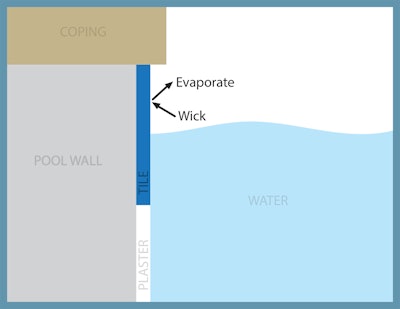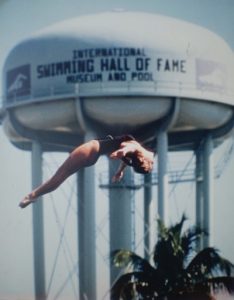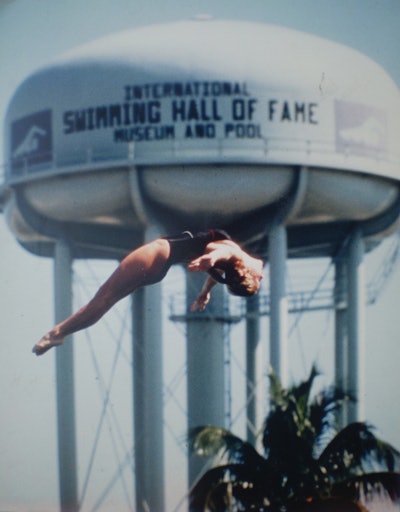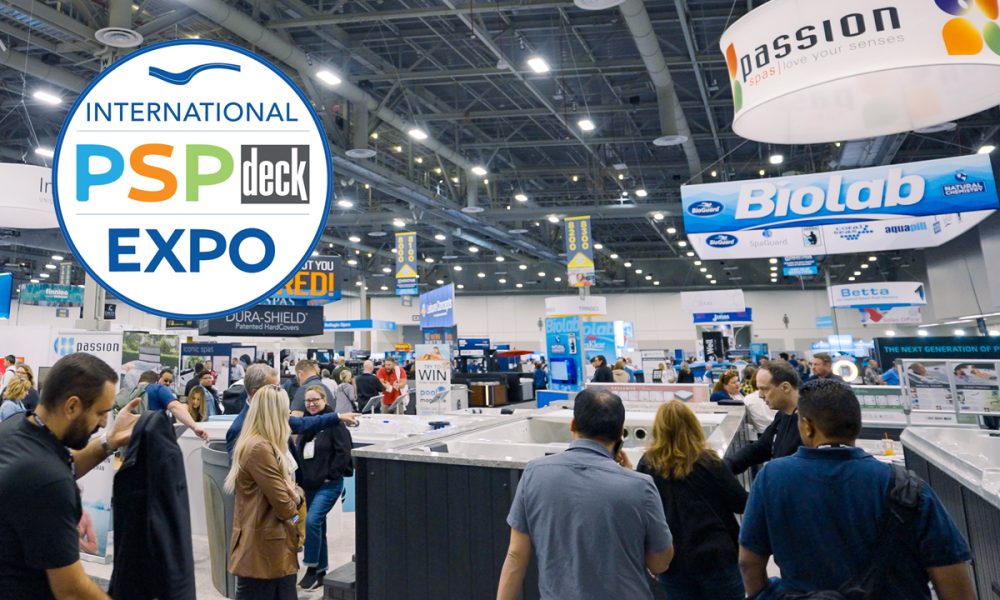In the pool water treatment industry, we are pretty well versed in the concept of scaling vs etching. In pools and spas, we use the term etching to refer to an aggressive chemical attack against cementitious, calcium carbonate-based surfaces. This type of attack involves a low Langelier Saturation Index or LSI, usually including low pH, alkalinity or calcium hardness (see “LSI Helps Stop Scale and Etching,” AQUA June 2024).
The LSI is a balance based on pH and factors for carbonate alkalinity, calcium hardness, total dissolved solids and temperature. Carbonate alkalinity is isolated by using a subtraction process based on cyanuric acid concentration. When the water is over-saturated with calcium carbonate, meaning high LSI, excess calcium in the water will precipitate (come out of solution) and cloud the water and/or deposit on underwater surfaces. Scale is a more interesting term because in the concrete industry, it means what we in the pool industry would call spalling, flaking or peeling. But in turn, in the concrete industry spalling means cracking, chipping, flaking or peeling! So for the purposes of this article, we are going to use the pool industry terminology and use the term “scaling” to mean “the opposite of etching” or the depositing or precipitation of calcium carbonate onto underwater surfaces by high LSI — usually from high pH, alkalinity or calcium hardness.
So what is the myth? It has to do with that stuff that ends up on the tile. There are sources in the pool industry who maintain that waterline deposits are the result of a chemical imbalance in the water, or too high of an LSI value. Is that true? No, it isn’t.
The fact of the matter is that waterline deposits form ABOVE the water level. In the normal course of events, water at the top of the pool, around the edges, actually wicks up onto the vertical face above the waterline. Depending on the porosity of that surface (usually tile, grout, exposed aggregate, fiberglass, rock feature, etc.), the water will usually wick up 1⁄4 to 3⁄4 of an inch above the water level. This wicked water then evaporates… but only the distilled water and dissolved gasses evaporate, as vapor. Where do the dissolved solids go? They stay right there, and build up on the tile just above the water line. That is not the result of a water chemistry imbalance because when it happens, there is no water.
On vertical surfaces that include materials of differing porosities, the residue will form first on the most porous surface and then spread horizontally across the less porous material. As seen in the photo on the left, this usually means that waterline residue starts just above the water level on the grout lines and then spreads across the tile face.
What is the residue made of? Initially it includes whatever was in the dissolved solids, which in most pools consists primarily sodium chloride (salt), secondarily calcium carbonate (bicarbonate calcium hardness that has carbonated as the water evaporated), and lastly, various metals (copper and iron), mineral salts (such as calcium sulfate, copper cyanurate, etc.), and organic materials (lotions, oils, pollen and other vegetative residue, etc.).
If the tile is regularly brushed and if the water is active at the waterline, the more soluble part of the residue may go back into solution (in the pool water), leaving the least soluble component of the residue, usually calcium carbonate. Depending on its chemistry and rheology (crystalline form), it may or may not be acid soluble, and it may range in hardness from a 2 to 3 on the Mohs scale.
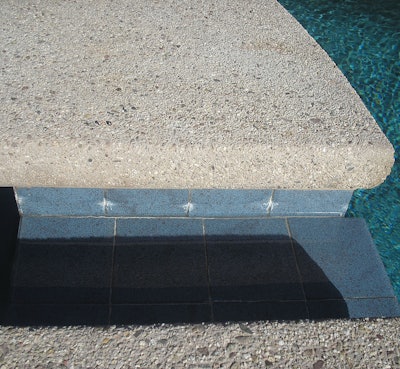 Residue starting above the water surface at the grout lines.
Residue starting above the water surface at the grout lines.
We have, then, a different vocabulary for this type of deposit. It is not scale since it is not calcium carbonate precipitated by high LSI. In fact, it is neither precipitated nor necessarily entirely calcium carbonate. The material is derived from the dissolved solids and is the leftover from an evaporation process. It could properly be referred to chemically as a “residue” or by the geology term “evaporite.” It increases with higher evaporation rates or from higher concentrations of hardness or dissolved solids in the pool water. It cannot be prevented by any manipulation of the saturation index. It can be slowed by decreasing the water’s calcium and/or dissolved solids concentrations. The rate of deposit is also slowed by lower evaporation rates.
This article first appeared in the January 2025 issue of AQUA Magazine — the top resource for retailers, builders and service pros in the pool and spa industry. Subscriptions to the print magazine are free to all industry professionals. Click here to subscribe.

